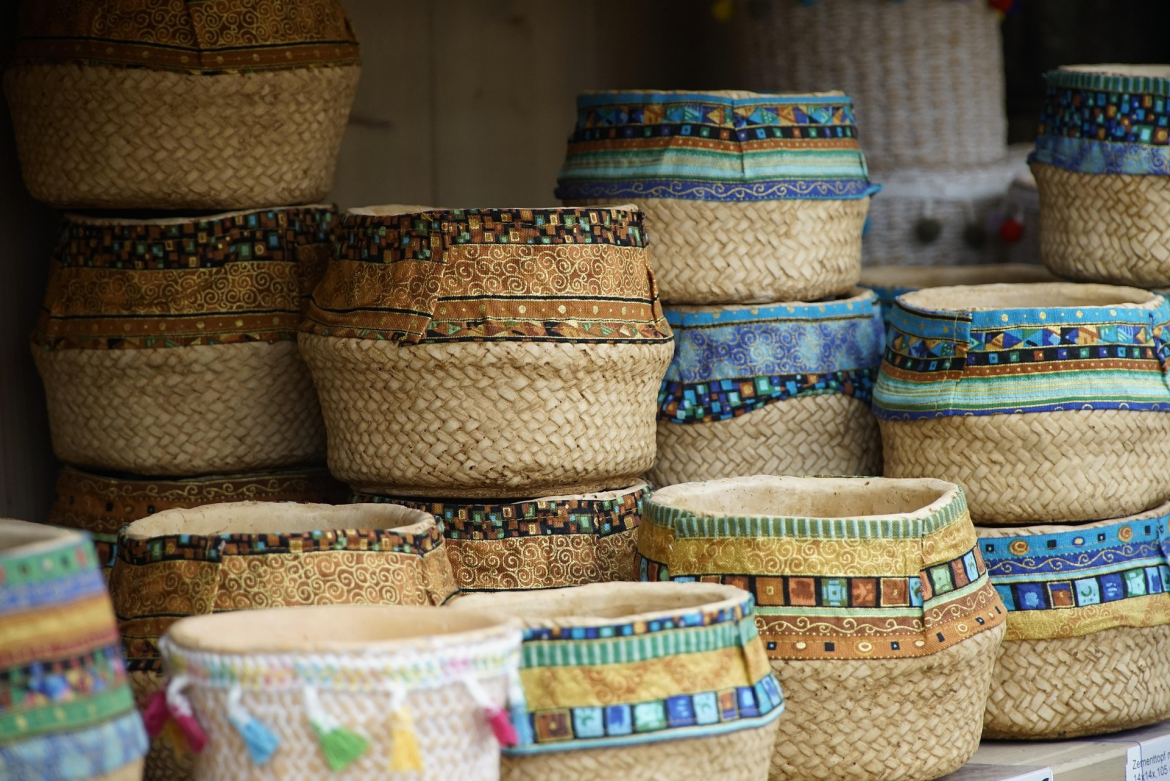Exploring Kenyan Culture: A Tapestry of Tradition and Modernity
by Ruth Nyambura.
Kenya, a vibrant East African nation located along the equator, is renowned for its breathtaking landscapes, diverse wildlife, and most notably, its rich cultural heritage. From the snow-capped peaks of Mount Kenya to the white sandy beaches of the Indian Ocean coast, Kenya is as geographically diverse as it is culturally layered. With over 40 ethnic groups, each with its unique language, customs, traditions, and worldview, Kenya stands as a living example of unity in diversity. It is a country where age-old traditions co-exist with the fast-paced energy of modern life, where ancestral wisdom finds expression in contemporary art, music, cuisine, and fashion.
This blog post explores the intricate fabric of Kenyan culture—an ever-evolving tapestry that weaves together the past, present, and future.
Ethnic Diversity and Languages
Kenya’s population is made up of more than 40 ethnic communities, broadly categorized into three major language families:
-
The Bantu: These are the largest language group in Kenya, including communities such as the Kikuyu, Kamba, Meru, Luhya, and Kisii. Historically agriculturalists, Bantu communities are mostly concentrated in central, eastern, and western Kenya.
-
The Nilotes: These include the Luo, Maasai, Kalenjin, Turkana, and Samburu, among others. They predominantly inhabit western and Rift Valley regions. Nilotes are known for their rich oral traditions, pastoralist lifestyles, and, in the case of the Kalenjin, world-class athletes.
-
The Cushites: Found mostly in northern Kenya, Cushitic-speaking groups include the Somali, Rendille, and Borana. Their ways of life are often shaped by the arid and semi-arid landscapes they inhabit.
Although English and Swahili are Kenya’s official languages, more than 60 indigenous languages are spoken nationwide. Swahili, a Bantu language enriched by Arabic and Persian influences due to centuries of trade along the Indian Ocean coast, serves as the lingua franca. Indigenous languages like Kikuyu, Dholuo, and Kalenjin are used in daily communication, cultural expression, and oral storytelling, preserving identity and heritage across generations.
Traditional and Modern Music
Music lies at the heart of Kenyan society, serving not just as entertainment but as a medium for storytelling, celebration, mourning, and community bonding. Traditional music varies by ethnic group, incorporating a rich array of instruments. The nyatiti, an eight-stringed lyre of the Luo people, orutu (a single-stringed fiddle), and drums like the Luhya’s isukuti are among the many instruments played during ceremonies.
As Kenya urbanized and globalized, its music evolved to include modern genres. Nairobi, often dubbed “Nairobbery” in music circles, is a creative hotspot. Afro-pop, Genge, Bongo Flava, and Kapuka dominate the contemporary soundscape. Artists such as Sauti Sol, Nyashinski, Bahati, Khaligraph Jones, and Nadia Mukami have earned international acclaim for blending African rhythms with pop, R&B, and hip-hop.
Music in Kenya is more than just beats—it’s a mirror of social change, youth identity, and national pride.
Cuisine: A Fusion of Flavors
Kenyan cuisine is a delightful celebration of cultural diversity and local resources. Each ethnic group brings something unique to the country’s culinary landscape.
-
Ugali: A staple made from maize flour cooked in boiling water to a thick consistency, ugali is the go-to accompaniment for most Kenyan meals. It’s typically paired with sukuma wiki (collard greens), beef stew, fish, or chicken.
-
Nyama Choma: Perhaps Kenya’s most iconic dish, “nyama choma” (grilled meat) is a favorite for social gatherings. Goat meat is the most common, roasted slowly over an open flame and served with kachumbari—a fresh tomato and onion salad.
-
Githeri: A wholesome mix of boiled maize and beans, often seasoned with onions and tomatoes. Githeri is popular in central Kenya and is sometimes served with avocado.
-
Mukimo (Irio): A Kikuyu specialty made by mashing boiled potatoes, green peas, maize, and pumpkin leaves. This hearty dish is often enjoyed with stew or nyama choma.
-
Chapati: Introduced by Indian immigrants, chapati is a soft, flaky flatbread enjoyed across Kenya. It’s commonly paired with lentils, meat, or vegetable curries.
On the coast, Swahili cuisine takes center stage with dishes such as:
-
Biryani and Pilau: Richly spiced rice dishes often accompanied by chicken, beef, or fish.
-
Coconut-based sauces and stews, flavored with cardamom, cloves, cinnamon, and ginger.
Kenya also boasts a vibrant street food scene:
-
Samosas: Deep-fried pastry filled with spiced meat or vegetables.
-
Mahindi Choma: Charcoal-roasted maize, a common roadside snack.
-
Viazi Karai & Bhajia: Deep-fried potato snacks popular in coastal towns.
-
Mutura: A traditional sausage made from cow or goat intestines stuffed with a mixture of minced meat and blood, seasoned with spices.
Popular beverages include:
-
Chai: Kenyan tea brewed with milk and sugar, enjoyed at all hours of the day.
-
Kahawa: Strong black coffee often served unsweetened in small cups.
-
Mursik: A fermented milk drink from the Kalenjin, traditionally stored in a soot-lined gourd.
-
Mnazi: A palm wine enjoyed along the coast.
-
Muratina: A fermented honey drink from the Kikuyu community, often consumed during ceremonies.
Clothing and Fashion
Fashion in Kenya is an exciting blend of traditional and modern influences. While Western-style clothing is common in urban centers, many people proudly wear attire that showcases their heritage.
-
The Maasai are instantly recognizable by their bright shukas—red or checkered cloth wrapped around the body—and their elaborate beadwork, which carries symbolic meanings related to age, status, and marital standing.
-
The Kikuyu, Luo, and Luhya communities also have traditional outfits worn during weddings and rites of passage, often adorned with locally sourced jewelry and colorful fabrics.
In cities, a resurgence of African print fashion is taking hold. Fabrics like kitenge, ankara, and leso are used to create modern dresses, suits, and streetwear that blend tradition with contemporary design. Young Kenyan designers are now making waves internationally, showcasing how fashion can be both culturally rooted and forward-thinking.
Festivals and Celebrations in Kenyan Culture
Kenyan culture is deeply rooted in both traditional and modern festivals.
-
Jamhuri Day (December 12): Celebrates Kenya’s independence.
-
Mashujaa Day (October 20): Honors national heroes.
-
Lamu Cultural Festival: Celebrates Swahili heritage.
-
Maralal Camel Derby: Attracts both locals and international tourists.
Traditional ceremonies such as initiation rites, Maasai weddings, and community harvest celebrations remain important in many regions.
Art and Craftsmanship
Kenyan art is a beautiful blend of traditional techniques and modern expression. Each region offers something unique:
-
Kisii Soapstone Carvings: Smooth, intricate sculptures ranging from animals to abstract forms.
-
Akamba Woodcarvings: Masterfully carved figures and home décor made by skilled artisans in Ukambani.
-
Maasai Beadwork: Used in jewelry, belts, and ceremonial regalia, beadwork is a colorful language of identity.
Contemporary Kenyan artists are also gaining global recognition. Painters like Michael Soi explore politics and urban life through satire, while digital artists use technology to reinterpret age-old myths. Nairobi’s art galleries—like the Circle Art Gallery and GoDown Arts Centre—are hubs for creativity and conversation.
Sports and Recreation in Kenya
Kenya shines in sports:
-
Long-distance running led by stars like Eliud Kipchoge
-
Football clubs: Gor Mahia, AFC Leopards
-
Rugby gains popularity
-
Traditional games: Ajua, stick fighting, wrestling
The Role of Family and Community
In Kenyan culture, the family is the cornerstone of society. The concept of “extended family” is deeply embedded, with cousins, uncles, and aunts often regarded as immediate family. Children are raised communally, and major life events such as weddings, childbirth, and funerals are collective affairs.
Respect for elders is paramount. It is common for young people to kneel or bow when greeting elders as a sign of humility. Traditional sayings like “mtoto wa mwenzio ni wako” (“your neighbor’s child is your own”) reflect the communal nature of child-rearing.
Hospitality is a core value; visitors are offered food and drink, and it is considered impolite to decline.
Religion and Spirituality
Kenya is a multi-religious nation, with Christianity being the predominant faith, followed by Islam, especially along the coastal region. There is also a small but vibrant community of Hindus, Sikhs, and Buddhists, mainly among Kenyan Asians.
Despite modern religious affiliations, traditional spirituality remains important. Some communities consult spiritual leaders, seers, or herbalists, especially in rural areas. Sacred natural sites like Mount Kenya, Lake Turkana, and Kaya forests among the Mijikenda are still revered.
Many people navigate between Christianity or Islam and indigenous beliefs, creating a spiritual hybridity that is uniquely Kenyan.
The Role of Youth and Innovation
Young Kenyans blend tradition with tech:
-
Music, fashion, and art go digital
-
Startups in Nairobi drive cultural entrepreneurship
-
Social media amplifies voices and stories
-
Eco-fashion and urban creativity redefine modern Kenyan identity
Conclusion
Kenyan culture is a dynamic blend of tradition and mordernity, shaped by its ethnic diversity, history and global influences. Whether through music, food, fashion or communal values, Kenya’s cultural richness continues to thrive, making it a unique and vibrant nation on the African continent.♥

